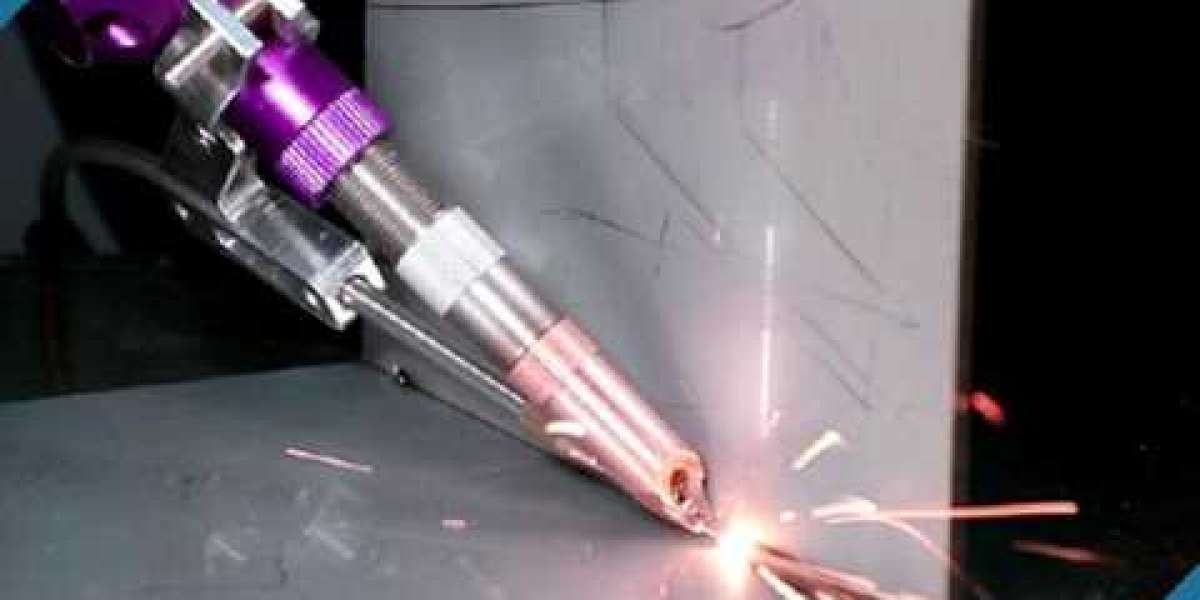This process uses a high-powered fiber laser beam as the heat source, ensuring deep penetration and controlled energy input. It has become essential for companies that demand consistent quality, whether they are working with thin sheets, dissimilar materials, or intricate components. In this detailed guide, we will explore fiber laser welding from multiple perspectives, including its process, applications, materials compatibility, performance in production environments, and long-term value.
Understanding the Process of Fiber Laser Welding
Fiber laser welding relies on a highly concentrated beam of light that is transmitted through a fiber optic cable, which then focuses on the material to create a weld. The energy density at the focal point is high enough to melt and fuse metals without the need for filler materials.
The precision of this process allows for both deep penetration welds and extremely fine seam welds, depending on the project requirements. Since the beam can be easily automated and controlled, manufacturers can integrate fiber laser welding into robotic systems, enhancing repeatability and reducing manual intervention.
Materials Suitable for Fiber Laser Welding
One of the strengths of fiber laser welding is its ability to work with a wide range of metals. It is widely used for stainless steel, aluminum, titanium, carbon steel, copper, and nickel alloys. Even dissimilar materials that are traditionally difficult to join, such as copper to aluminum, can be welded with proper parameter adjustments.
Thin sheets benefit particularly well from this process since it minimizes distortion and reduces heat-affected zones. For industries like electronics and battery production, where precise joints are required, fiber laser welding ensures consistency without compromising material integrity.
Applications of Fiber Laser Welding in Industry
Fiber laser welding is not limited to one sector—it has expanded across industries because of its flexibility.
Automotive Industry: Used for joining lightweight materials, such as aluminum car bodies, battery tabs, and exhaust components.
Aerospace Industry: Essential for turbine blades, engine parts, and lightweight structural elements that require reliability.
Medical Field: Used in manufacturing surgical instruments, pacemakers, and implants where precision and cleanliness are mandatory.
Electronics: Ideal for micro-welding tasks in connectors, sensors, and circuit components.
Energy Sector: Applied in battery packs, fuel cells, and solar panel production where long-lasting connections are critical.
Fiber Laser Welding and Automation
Modern production facilities increasingly rely on automation to reduce labor costs and improve efficiency. Fiber laser welding integrates seamlessly into automated lines, thanks to its precise beam delivery and programmable controls. Robots equipped with fiber laser heads can operate continuously, ensuring consistent welds even on complex geometries.
This integration enhances throughput and reduces downtime. As a result, companies benefit from greater productivity and reduced risk of defects compared to manual welding processes.
Performance in Production Environments
In high-volume production, fiber laser welding demonstrates superior performance due to its speed and repeatability. Welds can be completed in seconds, reducing overall cycle times. The minimal need for rework or finishing saves additional time and resources.
Its ability to maintain consistency across thousands of components is a crucial factor for manufacturers producing parts at scale. This ensures that every product leaving the facility meets industry standards without deviation.
Energy Efficiency of Fiber Laser Welding
Another important factor is energy consumption. Compared to traditional welding technologies, fiber laser welding systems convert electrical energy into laser energy with high efficiency. This results in lower operating costs and reduced energy waste. For companies with sustainability targets, adopting this technology supports both economic and environmental goals.
Fiber Laser Welding for Thin and Complex Components
The precision of fiber laser welding makes it particularly effective for thin metals and intricate designs. Where conventional methods may lead to warping or excessive spatter, the controlled beam of a fiber laser produces clean seams without damaging surrounding areas.
This capability is vital for industries like electronics and medical devices, where components are not only small but also sensitive to heat exposure. The controlled parameters allow for safe welding without compromising structural integrity.
Scalability in Manufacturing
From small workshops to large-scale production plants, fiber laser welding can be scaled to meet varying demands. Portable systems are available for on-site repairs and custom applications, while fully automated systems are used in mass production.
This scalability ensures that businesses of all sizes can benefit from the technology. Whether for prototyping or mass production, fiber laser welding adapts to different manufacturing environments with ease.
Maintenance and Longevity of Fiber Laser Systems
Fiber laser systems are designed for durability, with fewer consumables compared to traditional welding equipment. The sealed fiber delivery system reduces contamination risks, and the solid-state laser source has a long operational life.
Routine maintenance involves keeping optical components clean and ensuring proper cooling. With regular care, fiber laser welding machines can operate reliably for years, providing a solid return on investment.
Safety in Fiber Laser Welding Operations
Like any laser-based technology, fiber laser welding requires proper safety measures. Operators must use protective eyewear and adhere to laser safety protocols. Enclosed systems and automation further enhance safety by minimizing direct human exposure to the laser beam.
Companies investing in training and safety infrastructure ensure not only regulatory compliance but also long-term productivity by reducing workplace risks.
The Growing Role of Fiber Laser Welding in Future Manufacturing
As industries shift toward lightweight materials, miniaturization, and higher quality standards, fiber laser welding is becoming a central technology in modern manufacturing. The global demand for electric vehicles, renewable energy, and advanced medical devices continues to rise, and this welding method aligns with those requirements.
Research and development are further expanding the capabilities of fiber laser welding, enabling even greater precision, material flexibility, and integration with digital manufacturing technologies.
Final Thoughts
Fiber laser welding has become a cornerstone of advanced manufacturing, offering unmatched precision, efficiency, and scalability for industries worldwide. Its ability to join a wide range of materials, integrate with automation, and deliver consistent performance makes it a reliable choice for companies aiming to improve production quality and throughput. As industries evolve and demand more precise and efficient solutions, fiber laser welding will continue to play a vital role in shaping the future of metal joining technologies.



